Quick Key Facts
- The ocean covers more than 70 percent of the surface of the planet.
- The deep sea makes up 90 percent of the total marine environment and is the largest biome on Earth.
- More than 5,000 marine species live in the Pacific Ocean’s Clarion-Clipperton Zone, a focus area of deep-sea mining.
- Several countries — including Canada, France and New Zealand — have called for a moratorium on deep-sea mining.
- Deep-sea mining is not necessary to obtain the critical minerals needed for the renewable energy transition.
- Demand for critical minerals can be reduced by 58 percent by 2050 through the use of new technologies, circular economy strategies and increased recycling.
- 90% of electronic waste is dumped or illegally traded.
What Is ‘Deep-Sea Mining’?
Deep-sea mining is the process of retrieving mineral deposits from the ocean floor using destructive methods such as dredging, drilling and hydraulic pumps. These methods disrupt and harm marine life and their ecosystems.

The seabed is a largely unexplored world of unidentified species and mystery. The Clarion-Clipperton Zone — a 1.7 million square mile area of the Pacific Ocean — is a focal point of deep-sea mining for its polymetallic nodules rich in minerals such as copper, nickel, manganese, cobalt, rare earth elements and other precious metals used in the making of zero-carbon technology components. This abundant expanse is the subject of 17 exploration contracts with a total area of roughly 621,371 square miles — approximately the size of Ethiopia. But it is also home to more than 5,000 recently discovered marine species.

The sought-after nodules embedded in the ocean floor are about the size of a potato and take millions of years to form, along with mineral-rich crusts and sulfides surrounding hydrothermal vents. Due to recent technological advancements, mining these ecologically sensitive areas is achievable by razing the surface of the seabed, sweeping away layers of biodiverse sediment and pumping displaced and often destroyed organic materials back into the water.

Brief History of Deep-Sea Mining
Some small-scale exploratory mining has already taken place to test deep-sea mining equipment, but no commercial mining of the seabed has yet occurred. However, some mining companies and national governments have plans to start doing so as soon as they can — possibly in the next few years. Whether that happens or not will mostly depend on how the International Seabed Authority (ISA) chooses to regulate deep-sea mining.
In 2021, Nauru — a tiny Pacific Island nation in Micronesia — gave the ISA notice that it planned to start mining in international waters. This triggered the “two-year rule,” a controversial provision of the United Nations Convention on the Law of the Sea (UNCLOS). The rule mandates that the ISA must “consider” and “provisionally approve” deep-sea mining applications, whether or not there has been a finalized set of regulations.
The two years was completed for the Nauru application in July of 2023, but the ISA meeting that followed concluded without a final rule being agreed upon. The 168-member ISA Assembly has been working on establishing the rules for deep-sea mining. ISA’s Council — made up of 36 Assembly-elected members — has a goal of adopting finalized regulations by 2025.
As of July of last year, several nations — including Canada, Chile, Costa Rica, France, Palau and New Zealand — had called for a moratorium on deep-sea mining. According to the Pew Charitable Trusts, before regulations are adopted, the ISA must address how the impacts of mining will be monitored and addressed, what level of harm is allowed and how compliance with the regulations will be enforced.
Currently, contractors like corporations or individuals are only permitted to extract seabed minerals if they are sponsored by a UNCLOS state party and have obtained an exploitation contract from the ISA.
Contractors are required to use best environmental practices and a precautionary approach in order to control or prevent hazards like pollution of the marine environment. In addition, they must develop programs for evaluating and monitoring impacts in conjunction with the ISA. Consultation between stakeholders is also mandated at crucial junctures of the exploration stage — a period that can take years.
While they wait for an international waters code of conduct, countries can still proceed with mining projects inside domestically controlled waters, or “exclusive economic zones” (EEZs).
In January of 2024, Norway started the process of opening its waters to deep-sea mining exploration, which would likely begin in the 2030s.
Most mineral deposits that are sought after by mining operations are located outside EEZs on the vast abyssal plains of international waters, such as the Clarion-Clipperton Zone.
Arguments for Deep-Sea Mining
Those in favor of deep-sea mining say it will help meet the growing need for critical minerals used in the global decarbonization process. As we rely more on solar and wind energy, electric vehicles and other green technologies, the demand for some of these minerals could increase by four to six times. However, studies have shown that there are plenty of land-based sources for critical minerals.
Some proponents of deep-sea mining view it as a way to avoid some of the environmental hazards of mining on land, like pollution of freshwater by mining runoff and deforestation. But the destruction of marine life and ecosystems wrought by deep-sea mining means it would not be a better alternative for biodiversity or the planet.

Threats Posed by Deep-Sea Mining
Harms Marine Life and Ecosystems

The largest biome on the planet — 90 percent of the total marine environment — the deep sea is home to vast biodiversity that is being threatened by deep-sea mining. It is highly likely that the heavy equipment used to mine the seabed would kill less mobile deep-sea creatures.
Many deep-sea species make their homes in the polymetallic nodules that are the harvest of deep-sea mining operations. The nodules develop over millions of years, so the recovery of the ecosystems they support would be extremely slow if possible at all. The removal and destruction of these important habitats would almost surely result in the extinction of some species.
Releases Stored Carbon
Not only is the ocean floor home to an unknown wealth of species, it plays an essential role in the regulation of our planetary systems by absorbing and storing enormous amounts of the carbon dioxide humans emit through the burning of fossil fuels, deforestation, industrial enterprises, agriculture and other activities.
Approximately 25 percent of the carbon dioxide emitted by humans is absorbed and sequestered by the ocean’s deep-sea microscopic organisms. The ocean is Earth’s biggest carbon sink, storing approximately 38,000 gigatons of the greenhouse gas.
Mining the seafloor can cause the release of carbon sequestered in sediments and reduce deep-sea biodiversity, impacting the ocean’s carbon cycle and exacerbating the climate crisis.
For each kilometer of the seabed that is mined annually, 190.2 tons of carbon could be released through sediment plumes. These plumes can block sunlight, reducing the photosynthetic abilities of marine organisms who help mitigate temperature increases worldwide by absorbing carbon for energy.

Releases Toxic Sediment Plumes
There are many detrimental impacts to marine life and ecosystems by the release of sediment plumes during the deep-sea mining process. Among the most direct and devastating is that the plumes can suffocate and smother organisms who make their home on the seafloor. Some of these creatures are not as mobile and may be killed by the mining equipment itself.
Clouds of sediment have the potential to choke midwater marine ecosystems. The plumes can interfere with the reproduction and feeding of species through the introduction of heavy metals like cadmium and copper into the natural food chain. These metals can also be released in toxic concentrations when seafloor sediments are disturbed, polluting the water column. The metals can have deadly effects on filter feeders and organisms who are unable to move freely, like sessile suspension fauna.

The discharge of mining wastewater can also create underwater dust storms that pollute and confuse marine organisms, preventing them from navigating through the water, feeding and reproducing.
Light Pollution
Marine organisms are used to an environment that is quiet, dark and peaceful. In addition to the direct harm caused by the process of mining the ocean floor, longer ecosystem and species disruptions can result from mining activities, such as light pollution interfering with reproduction and feeding.
Noise Pollution
Sound pollution from deep-sea mining can impact large whales, narwhals, dolphins and other marine mammals who rely on echolocation — or biological sonar — to hunt, navigate and locate one another. These species are already threatened by human activities like fishing and boating, as well as human-caused climate change.
Leaves Behind Waste Materials That Poison Marine Life and Impact Fisheries and Food Security
Mining wastewater is warm and filled with chemicals, which can kill marine animals by overheating and suffocating them. The chemicals also pollute the ocean floor and water column, making the seawater toxic, as well as altering its pH and oxygen content, all of which are harmful to marine life.
Waste discharge can diffuse across large distances, posing a threat to fish and invertebrates who live in the open ocean. These marine species are essential to the fisheries and economies of small island developing nations like Vanuatu, the Marshall Islands and Kiribati.

Economic and Social Risks of Deep-Sea Mining
Deep-sea mining is conducted offshore in the depths of the ocean, but the industry would still need to build facilities onshore to process and ship materials. This would require the acquisition and development of land, which leads to habitat loss and impacts on coastal communities who rely on marine resources for their food and livelihoods.
Minerals extracted from the high seas have been designated by the UN as “the common heritage of [hu]mankind” for the benefit of all nations. However, the current ISA regulatory regime seems to support the flow of profits to mining company shareholders and developed nations, instead of to developing countries.
Why Deep-Sea Mining Is Not Necessary for Renewable Energy
Deep-sea mining is not necessary to obtain the critical minerals needed for zero-carbon technologies. In order to supply the rare earth elements needed to meet the demands of the growing renewable energy sector, mining and processing of land-based mineral reserves must be increased responsibly to minimize negative environmental and social impacts.
In the coming 15 to 20 years, recycling of minerals will hopefully become a feasible alternative to mining. According to World Bank estimates, the significant increase of end-of-life battery recycling rates by mid-century could reduce the necessity of newly mined minerals by roughly 25 percent for nickel, lithium and copper, and approximately 15 percent for cobalt. Unfortunately, there will not be an adequate supply of these minerals circulating for recycling to be a workable approach by 2030.
Improved recycling methods in established channels — electrical and electronics, for instance — could lessen some of the shorter-term pressure on supply while preparing a secondary supply chain to tackle future end-of-life carbon-neutral energy products.
Research is also being done on obtaining critical minerals from hard rock mine tailings and coal waste, rather than mining undisturbed land.
The evolution of battery technologies may also make mineral deposits found in the deep seabed obsolete for renewable products. An example is the shift from those that use nickel manganese oxides toward lithium iron phosphate batteries. While the nodules that are the focus of deep-sea mining operations are rich in cobalt, nickel, copper, manganese and rare earth elements, they do not contain an abundance of lithium and iron.
Sodium-ion batteries could also change the EV battery market, replacing cobalt and lithium with alternatives that are more abundant and less expensive.
What We Can Do to Help Stop Deep-Sea Mining
Apply the ‘Three Rs’ to Electronic Products
The more we do to ensure mining for minerals is avoided, the better it will be for the environment. One of the best ways to do this is to apply the “three Rs” — reducing, reusing and recycling — to batteries, cell phones, computers and even renewable energy products like solar panels.
Choose Sustainable Alternatives
A shift away from traditional lithium-ion and nickel manganese cobalt oxide batteries to those made with lithium iron phosphate, which do not need cobalt or nickel — raw materials sought through deep-sea mining — could help lessen the pressure to find as many critical minerals.
Other alternatives being developed include sodium-ion batteries — a more abundant and less expensive choice — which could replace cobalt and lithium.
Do Away With Electronic Waste
The vast majority of electronic waste — 90 percent — is dumped or illegally traded. More copper and cobalt is discarded each year in e-waste than could be supplied by deep-sea mining in the central Pacific Ocean for a decade.
To cut down on e-waste, we can encourage governments to pass “right to repair” legislation, as they have in Portland, Oregon. These laws ban disposable electronics, make fixing products easier and develop standards for helping consumers identify longer-lasting products.
Reduce Overconsumption
One of the best ways to reduce electronic waste is to not buy electronics you don’t really need in the first place. When you do decide to spring for a new electronic device, donate or sell your old one online or bring it to a local electronic collection center.
Another way to reduce overconsumption and e-waste is to buy quality products that will last and won’t need to be replaced quickly. You can also purchase gadgets with repair services and extended warranties. It’s always a good idea to check a product’s lifespan before purchasing it.
Avoid electronics that are trendy and will go out of style. Some products will try and tempt you with the latest upgrade when it really isn’t that different from earlier models. Avoiding the urge to stay “up to date” can mean creating a lot less e-waste. You can also support companies that use sustainable manufacturing practices.
Build a Circular Economy
A 2022 report by SINTEF found that we can reduce critical mineral demand by 58 percent by 2050 by using circular economic strategies, new technologies and increased recycling.
One option is to use the minerals we already have access to through urban mining. Another is to develop improved designs and technologies so that we can recover minerals from products that are no longer being used.
Takeaway
There are many environmental reasons not to pursue deep-sea mining — its impacts on marine animals and the environment, as well as its ecological implications.
As we stand on the cusp of a full transition away from fossil fuels to a world powered by green energy and a circular economy, it is essential that we focus our energies on sourcing minerals in a way that doesn’t decimate habitats and ecosystems. To do this, we must prioritize increased critical minerals recycling, ethical land-based mining practices and improved product designs so that they can be used and reused longer without needing to be replaced, thereby reducing demand for these elements.

The post Deep-Sea Mining 101: Everything You Need to Know appeared first on EcoWatch.
https://www.ecowatch.com/deep-sea-mining-facts-ecowatch.html
Green Living
How Toad&Co’s Clothes Help Everyone Enjoy the Outdoors
This is a sponsored article about a brand that was independently assessed by our rigorous ratings system. We’re proud to only collaborate with “Good” and “Great” rated brands. Learn more.
US brand Toad&Co has a socially and environmentally responsible approach to clothing, creating pieces inspired by the outdoors and with a lower impact on the environment. Not to mention an enduring commitment to helping everyone get outdoors through its work with non-profits. Read on to discover the brand’s environment-first ethos.
Focusing on what matters most
“We make feel-good clothes for positive impact—fostering community around doing good, enjoying life’s simple pleasures, and embracing the unexpected,” says Sarah Palladino, director of people and impact at Toad&Co as she introduces the Californian brand. This “simple pleasures” concept applies to Toad&Co’s approach to design, too, and prioritises quality and responsibility over trend-led items. This, in turn, means the brand focuses its energy on clothes that are comfy and practical enough for everything from work to outdoor exploring, and on maintaining its ongoing commitments to using lower-impact materials, partnering with cleaner factories, and looking for new ways to do more with less.
Since day one, it’s been about more than just clothes. From choosing sustainable practices in every corner of our business to supporting programs that protect the planet and make the outdoors more accessible to everyone—knowing we stand for more is what keeps us going
Gordon Seabury – CEO at Toad&Co
Lower-impact materials and producer responsibility
Opting for lower impact materials is one of the core ways brands can address their impact on the planet: “Sustainable materials make a world of difference,” Toad&Co says. “We use organic cotton, recycled fibres, and other high-quality materials known for low-impact growing and cleaner manufacturing.”
The brand’s selection of more sustainable materials includes organic cotton, hemp, TENCEL Lyocell, and recycled fabrics like wool, cotton, and polyester. It also looks to third party clothing certifications like bluesign®, OEKO-TEX® STANDARD 100, and Global Organic Textile Standard, and it publishes its list of restricted substances for all to see.
Toad&Co also operates a resale platform, called ToadAgain, online and at its IRL store in Maine, US, to keep its clothes in the loop.
Supporting non-profits and access to the outdoors
Toad&Co donates 1% of its profits to organisations working to empower others and, in particular, enable better access to the outdoors for all.
In 1996, Toad&Co partnered with Search, Inc. to co-found the Planet Access Company, a full-functioning warehouse that trained and employed up to 70 adults with disabilities annually.
Determined not to stop at the front door, the brand also co-founded Search for Adventure in 2004, a unique travel program to facilitate vacations for adults with disabilities. Over 20 years later, the social venture partnership has evolved—and includes a flagship store in Chicago, a program called Visibility Arts that nurtures creativity through sharing Search, Inc. artist’s work, neurodiversity and disability awareness training, and an expanded Search for Adventure program. In 2024, the brand supported 147 nights of camping for adults with disabilities through the program.
We give back to—and partner with—organisations that align with our three pillars of giving: conservation for human enjoyment, equity and accessibility, and do the right thing
Sarah Palladino – director of people and impact at Toad&Co
One of Toad&Co’s key partnerships is with Brave Trails, which is dedicated to LGBTQ+ youth leadership, to support it in putting on accredited camps, mentorship programs, and meet-ups for LGBTQ+ youth.
Shop favourites from Toad&Co’s new collection
Read on to discover some of the standout items that balance style with practicality from Toad&Co’s lineup.
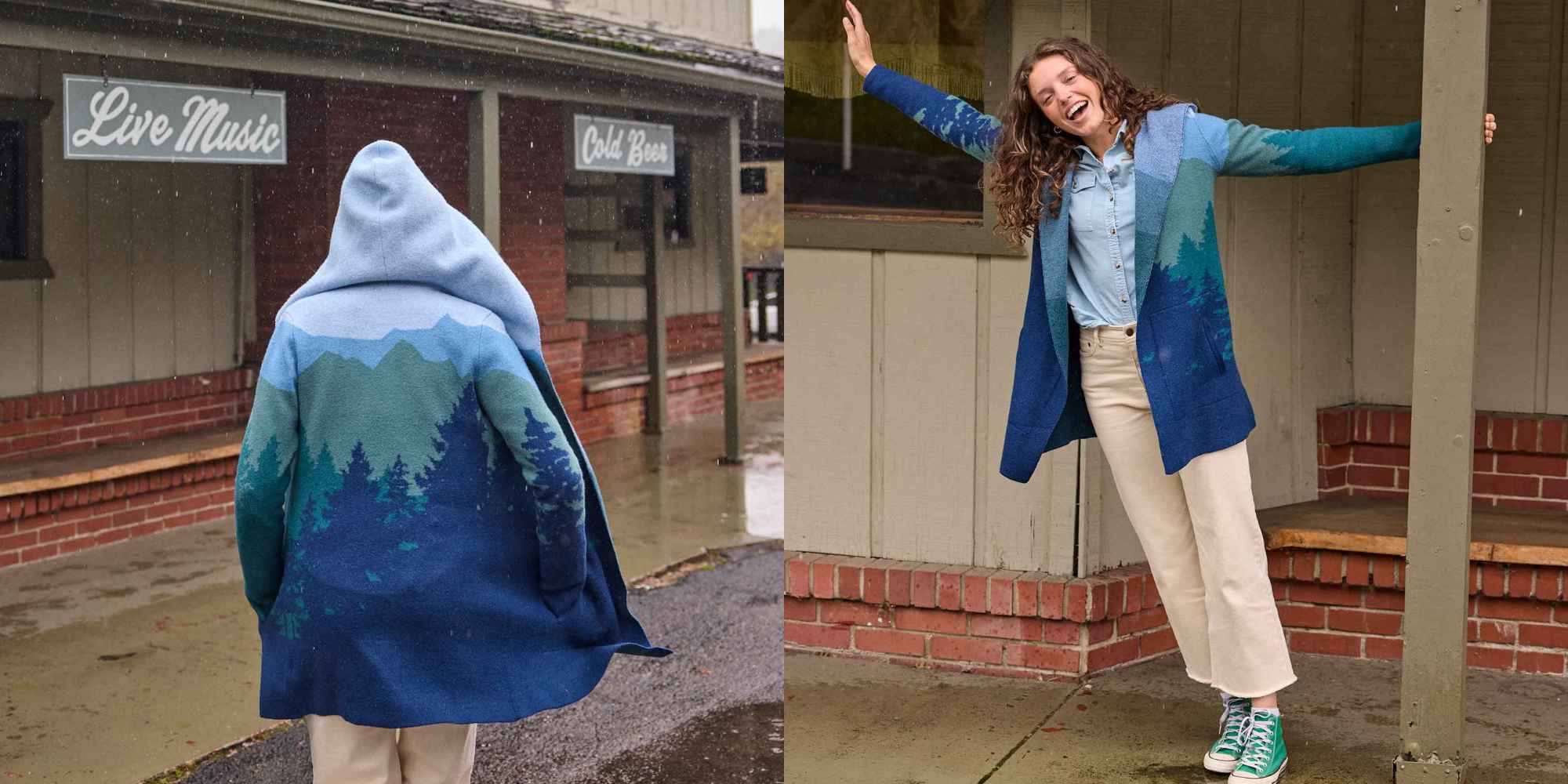
Woven with a beautiful alpine jacquard pattern, this hoodie is made from non-mulesed Merino wool and features pockets at the sides. It’s ideal as a mid-layer under a longer coat when you’re out exploring, or as a cosy item for grabbing a post-walk hot chocolate.

This Alpineglo sweater is a blend of 50% organic cotton and 50% non-mulesed Merino wool, so it’s going to help regulate your temperature in most climates. On top of that, the neutral tone and straight fit make it really versatile—you’ll be reaching for it on the regular.
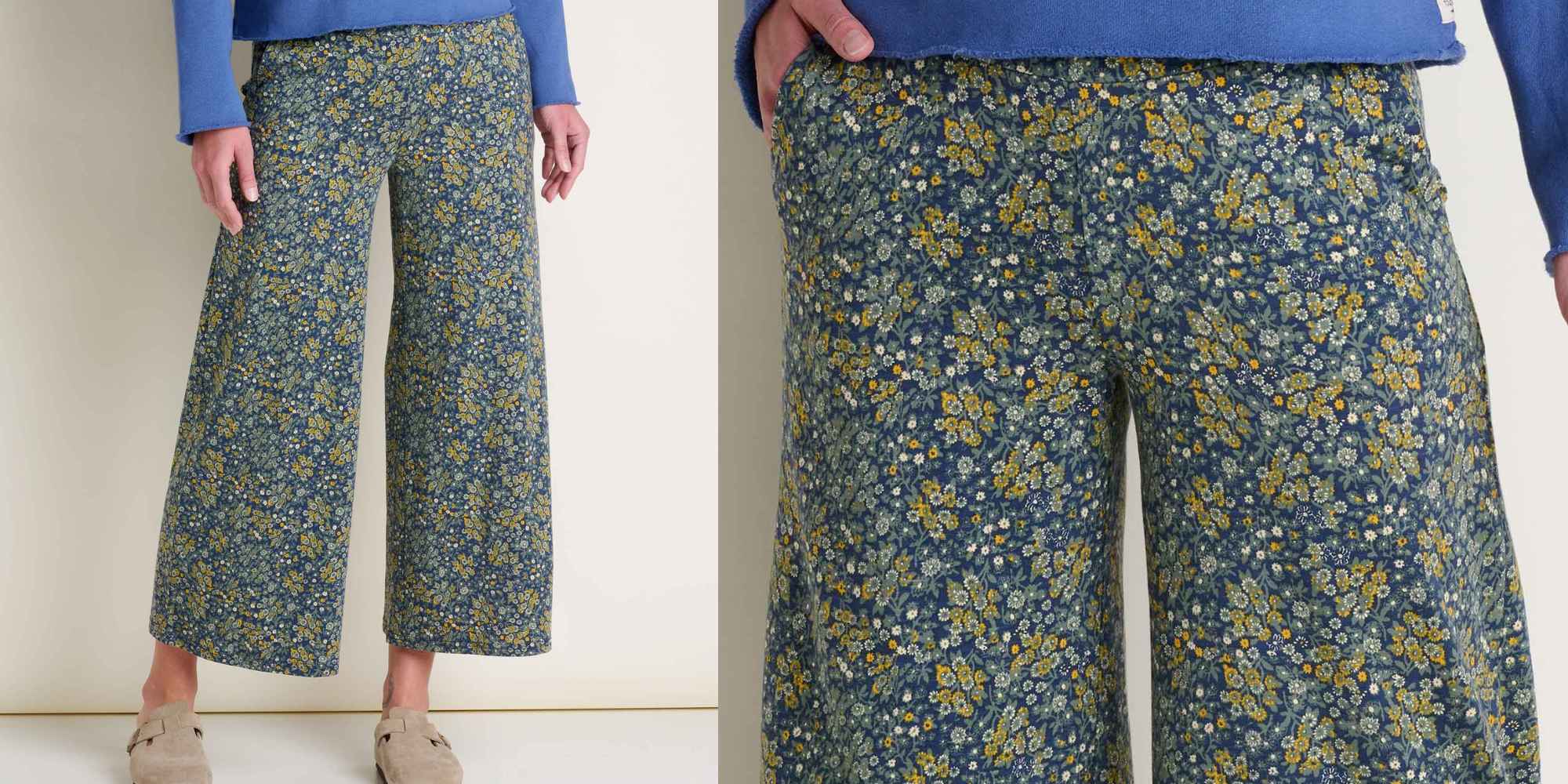
Toad&Co calls these cropped trousers “sweatpant comfortable, going-out presentable”, which makes sense, given they’re made with organic cotton and Tencel Lyocell for softness and have a comfortable wide waistband, not to mention a pretty floral pattern.

This Nomader jacket is reversible, packable, and water-resistant. In other words, it’s the ideal item to take with you for outdoor adventures. It’s made from recycled nylon and lightly quilted for warmth.
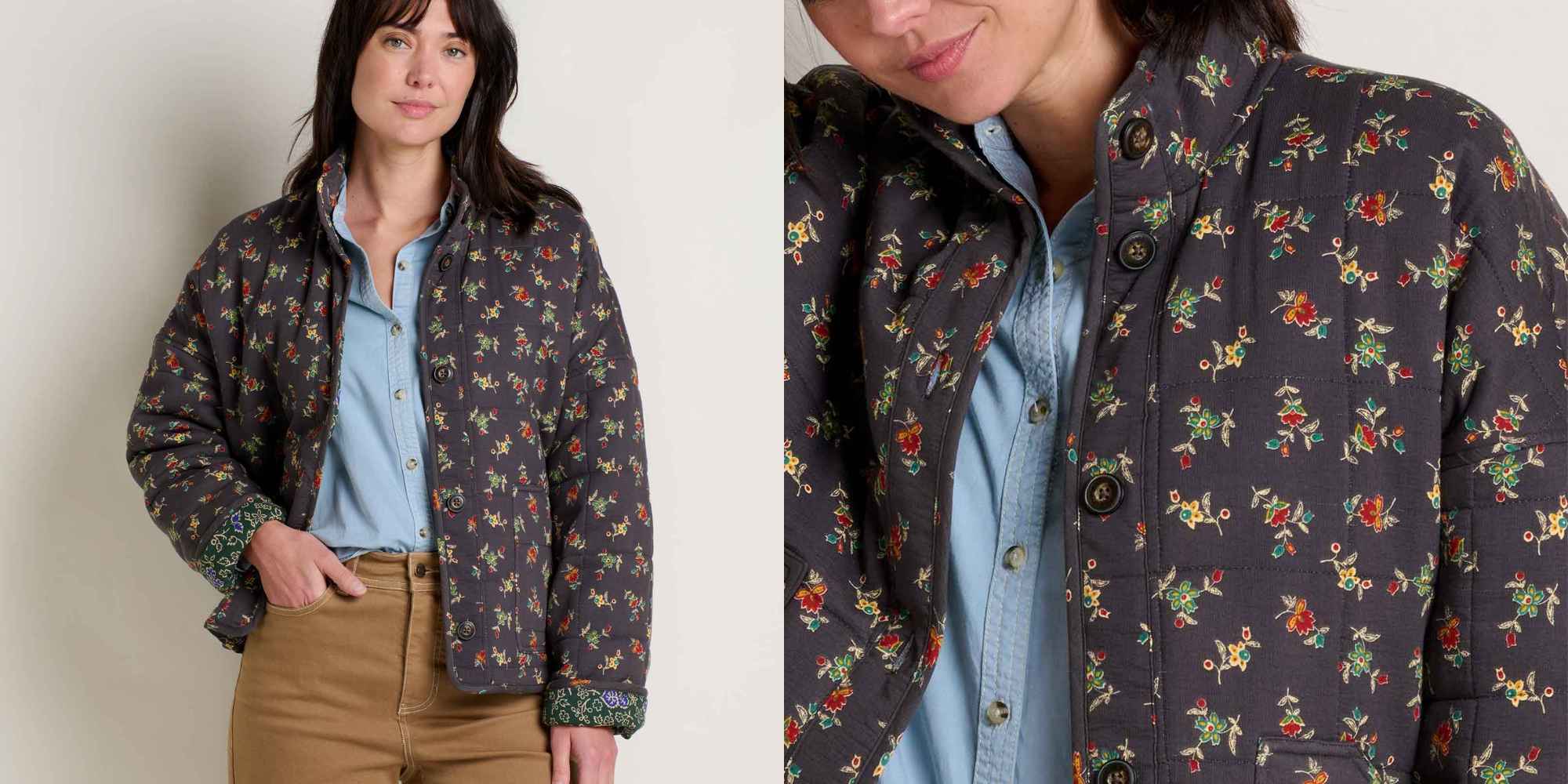
Toad&Co picked the crepe-like organic cotton for this jacket so that you could fold it away in a bag and have it still look presentable when you pull it out. It’s also packed with recycled polyester padding for extra warmth.
 Balsam Cutoff TrousersThese Balsam Trousers are made with a tiny bit of stretch and a special waistband for comfort, so they’ll flex with you and feel good all the time. The neutral brown colour also goes with so many options.
Balsam Cutoff TrousersThese Balsam Trousers are made with a tiny bit of stretch and a special waistband for comfort, so they’ll flex with you and feel good all the time. The neutral brown colour also goes with so many options.These Balsam Trousers are made with a tiny bit of stretch and a special waistband for comfort, so they’ll flex with you and feel good all the time. The neutral brown colour also goes with so many options.
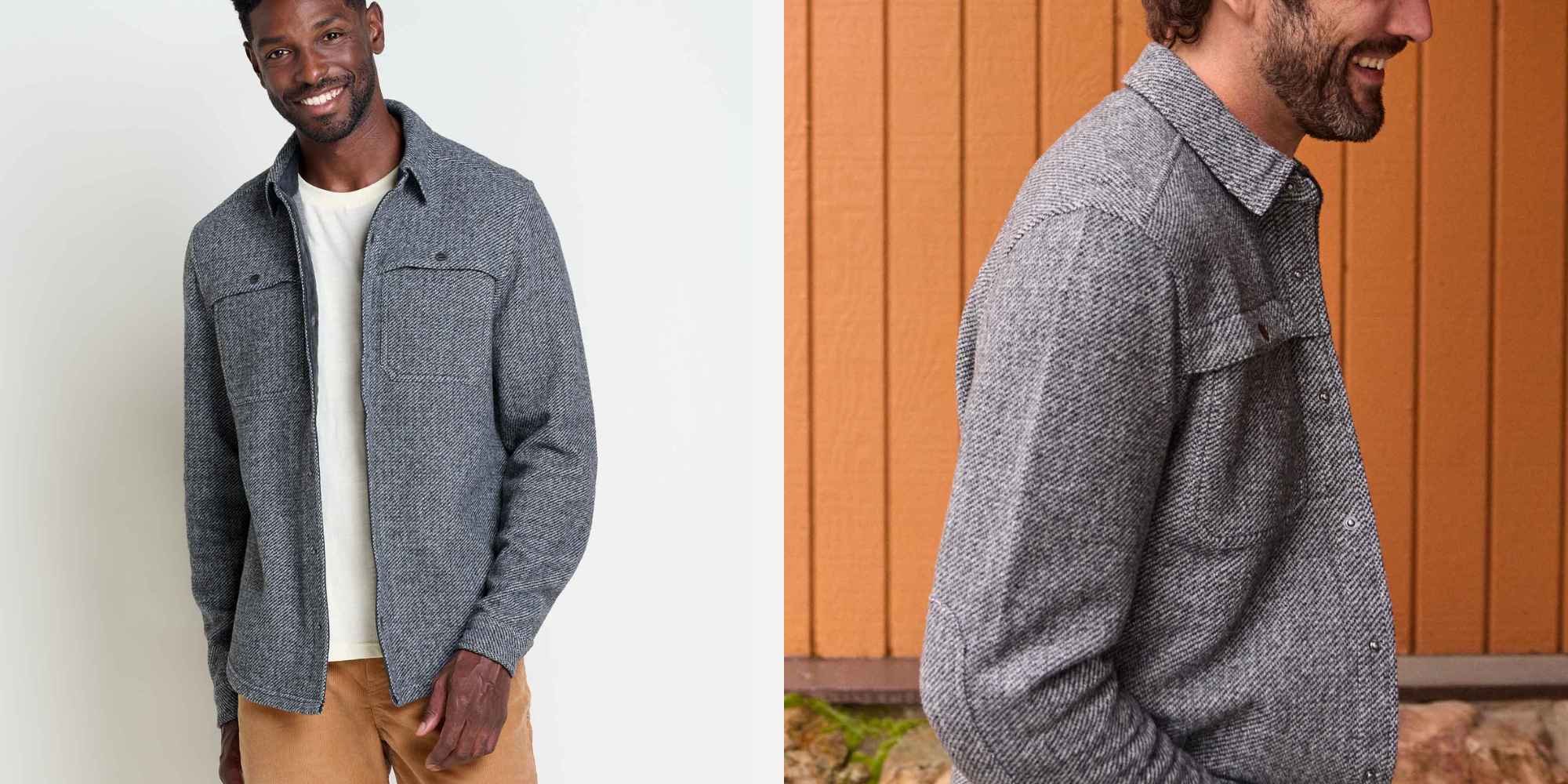
Going from a walk to dinner? From the office to drinks? This Kennicott shirt jacket fits the bill for all of the above. The smart twill fabric incorporates recycled Italian wool.

This is Toad&Co’s Re-Form Herringbone: a blend of recycled cotton and polyester that offers a soft drape and an attractive herringbone weave that looks smarter than the average checked shirt.
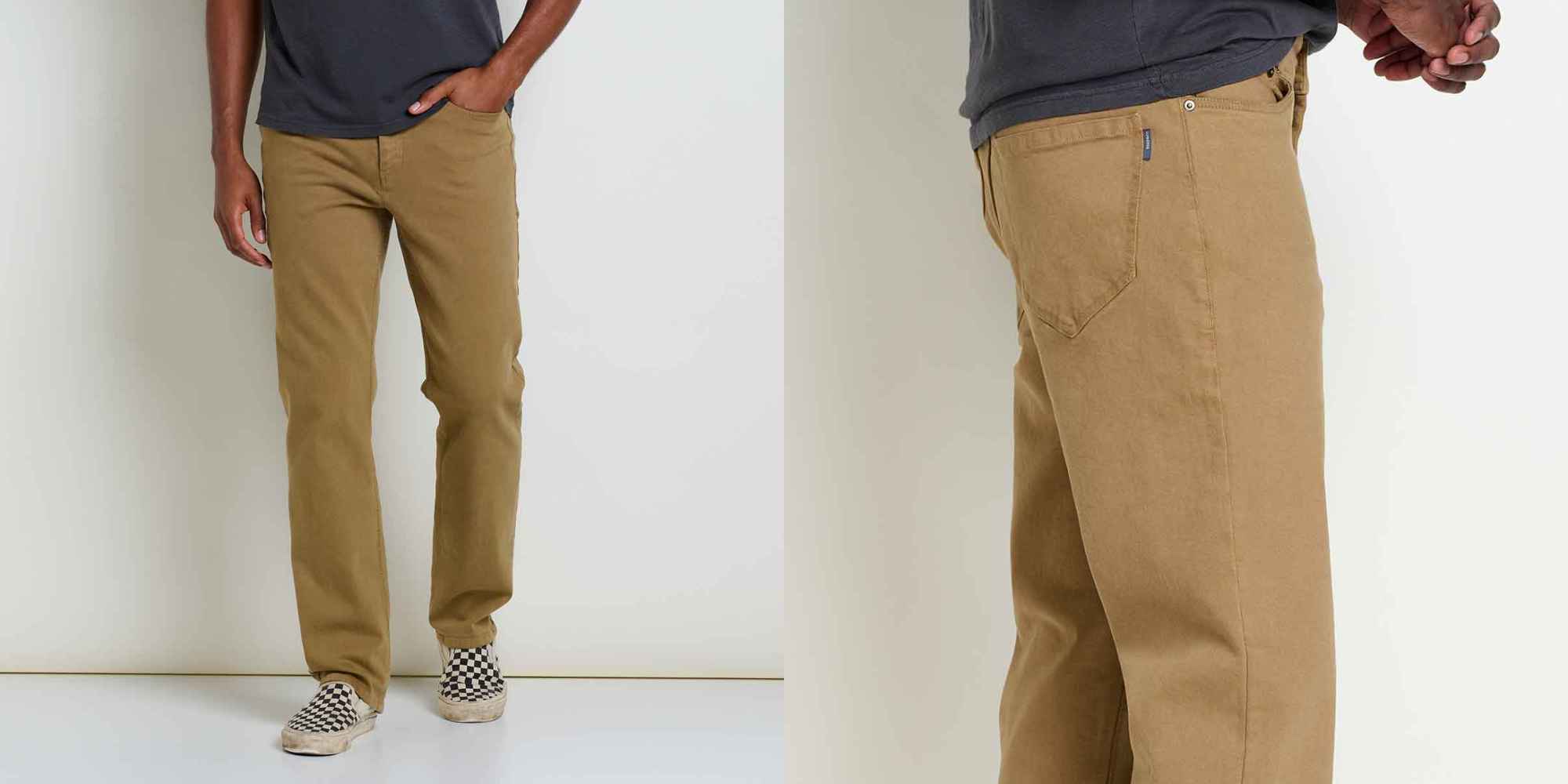
Like the women’s equivalent, these Balsam trousers have a touch of stretch and a comfortable ‘FlexForm’ waistband that mean they’re going to feel comfortable from the get-go—and you won’t need to worry about a belt, either.
Discover more of Toad&Co’s clothes.
The post How Toad&Co’s Clothes Help Everyone Enjoy the Outdoors appeared first on Good On You.
Green Living
50 DIY Christmas Presents Anyone Can Make
Last Updated on November 21, 2025
If you’re on the handmade Christmas kick this year, you’re not alone. So am I!
I’m choosing presence over presents this year and bringing back the 90s Christmas I loved as a kid – simple, crafty, low pressure, and full of small moments that feel meaningful.

If you want to gift thoughtfully, and without breaking the bank, these DIY Christmas presents are for you. There’s something for everyone on this list – whether you prefer easy or complex DIYs.
I’ve included all kinds of DIYs – beauty, cooking, fashion, and practical gifts alike. Best of all? Many of these tutorials are zero waste (or close to it).
what are good homemade Christmas gifts?
Good homemade Christmas gifts include consumable items, like homemade nut butters, vanilla extract, or jams. But not all homemade gifts are edible – you can also make items like bath bombs, candles, body scrubs, beeswax wraps, and so much more.
If you’re extra crafty, you could even make wooden gifts (like shelving or tablet holders), ceramic items (like mugs or jewelry), or knitted/crocheted pieces (like blankets, scarves or hats).
It all depends on your level of skill, time at your disposal, and ingredients/materials you have access to.

what are good inexpensive Christmas gifts?
Some good inexpensive Christmas gifts are DIY cornstarch ornaments, handmade body or lip scrub, seasoned salt blends, and homemade treats (like these chocolate chip cookies or vegan sugar cookies).
And never forget to hit up your local thrift store – you can find so many great items that would make affordable gift baskets!
Wrapping DIY Christmas gifts also doesn’t have to be expensive. Reusing gift bags and ribbons from last year, upcycling packaging paper, or even repurposing a scarf for furoshiki wrap are all low-waste and affordable!
RELATED: Gift Wrapping: How to Keep It Easy, Eco and Chic
how can I make a last minute gift?
You can make a last minute gift by getting crafty using the materials you have on hand!
For example, if you have a cardboard box, why not try making an upcycled cardboard dollhouse, vehicle, or pirate ship for a child? For adults, a DIY storage container or a shoe rack works.
One of my fav last minute gifts is scented bath salts in an upcycled glass jar – just a little Epsom salt and essential oil blends will do the trick!
Here’s my list of DIY Christmas gifts – something for everyone and every skill level.

- Bath salts
- DIY makeup like mascara/eyeliner, or lip to cheek
- Bath bombs
- Lip scrub
- Lip balm
- Face mask
- Body lotion
- Natural perfume
- Dry shampoo
- Shampoo bar
- Body soap
- Deodorant
- Rose water toner
- Hand-poured coconut/soy/beeswax candles
- Simmer pot in a jar
- Cookie, brownie, soup mix or hot cocoa mix in a jar
- Handmade seasoning blends
- Vanilla extract
- Vegan caramels or plant-based butter wrapped in compostable parchment paper
- Herb or citrus infused olive oil
- Peanut butter + jam
- Beeswax wraps
- Apple or pumpkin butter
- Sourdough or no-knead artisan bread
- Finished embroidery hoops
- Embroidered pillows, tote bags, clothes or cloth napkins
- Sewn cotton rounds
- Knitted scarf, hat, gloves, sweater, or blanket
- Hand warmers
- Quilt blanet, quilted coat or quilted wallet
- Tie dyed secondhand silk scarves, clothing or sheets
- Hand painted or drawn artwork
- Air dry clay paint palette
- DIY wooden frame for paintings or print photos
- Handmade ceramics (mugs, chawan, chasen holder, vase, spoon rest, etc.)
- Woodworked items (birdhouse, shelving, bookcase, wall guitar mount)
- Carving wooden bowls by hand
- Natural branch coasters
- Plant propagations in one of these DIY planters
- Seed balls using native seeds
- Handwoven baskets or bowls
- Macrame produce bag
- Macrame plant hanger
- Fabric paper mache bowls
- Upcycled paper earring jewelry
- Clay earrings
- Handmade plush toys
- Felt ‘food’ toys
- Wooden toys (like vehicles, blocks, or dollhouses)
- Knit or crocheted baby clothes
What do you think of these DIY Christmas presents? Let me know in the comments!
The post 50 DIY Christmas Presents Anyone Can Make appeared first on Going Zero Waste.
Green Living
8 Best Non Toxic Rugs For a Sustainable Home
Last Updated on November 6, 2025
Did you know most rugs are made from polyester, aka plastic? Arguably, a good chunk of our furniture and home decor is nowadays.
And lets not forget – rugs can get a lot of foot traffic. If it’s made from polyester, chances are those plastic fibers are going to shed and get onto us. Or worse, in us.

Some of the links in this post are affiliate links; for more information please see my disclosure policy.
Microplastics have been found in human feces, blood, and even placentas. And according to a study from Stanford University, those who had microplastics in their plaque had a higher risk of heart attack, stroke and death than those who didn’t.
On top of this, 5 billion pounds of rugs go to waste each year – that’s 2% of total US landfill. And if they’re made from plastic? They won’t biodegrade.
It’s more important than ever to reduce our exposure to microfibers where we can. Which is why I’ve rounded up the best non toxic rugs on the market.
what is the least toxic rug?
The least toxic rug will have sustainable materials and use no harsh chemicals (like PFAs) in their production.
Here’s what to look for when purchasing a non-toxic rug:
- Sustainable materials, such as organic cotton, jute, sisal or wool
- Low-waste packaging + delivery
- Natural, non-synthetic dyes
- Third-party certifications like OEKO-TEK, Fair Trade, GOTs
- Easy to spot-clean or machine wash
- Available in various styles, patterns + colors to suit your needs
do all rugs have PFAS?
According to Department of Toxic Substances Control (DTSC), only four samples of 201 carpets and rugs were found to contain more than 100 parts per million in their fibers, indicating PFAS were intentionally added to the products.
However, while PFAs may not be a huge concern for rugs, microplastic pollution is, specifically if your carpet is synthetic. Your best bet is to check the material your rug is made from and choose natural fibers whenever possible.
what is the best non-toxic rug for nursery?
The best non-toxic rug for a nursery would be made from natural materials like wool and organic cotton (which are soft on baby’s skin).
I recommend also checking for natural latex for the rug backing and underlay pads. Brands on this list that offer kid-friendly sizes and patterns include Lorena Canals, Nestig, Quince, and Loomy (more on each below).
what brand of rugs are non-toxic?
The brands of rugs that are non-toxic are listed below. I’ve gone ahead and highlighted some of my favorite features of each brand, but it isn’t an exhaustive list. Be sure to check out their websites for more information.

1. hook and loom
- Various rug sizes, shapes + patterns
- Made from GOTs certified organic cotton, recycled cotton + wool
- No dyes or harmful chemicals
- No latex

2. lorena canals
- Various rug sizes, shapes + patterns
- Handmade by artisans using recycled materials like organic cotton + wool
- Nontoxic dyes
- Make your own option
- Machine washable
- Rugcycled line made from recycled materials in their own factory

3. sabai
- Field rug
- Woven using wool + jute
- Available in 3 varying sizes
- Rug pad add-on available for reduced movement
- Certified B Corporation

4. quince
- Various sizes + patterns, best known for vintage-inspired looks
- Made from natural materials like wool, jute, + cotton
- Handcrafted by artisans in India
- Transparent pricing practices
- Compostable poly bags + recycled plastic mailers

5. west elm
- Rugs for every area of the home, in varying sizes
- Made from wool, jute, hemp, cotton, TENCEL + recycled materials
- Handspun by skilled artisans in India
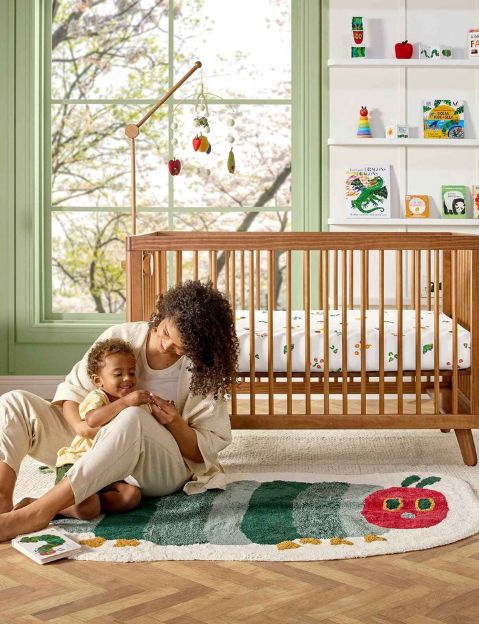
6. nestig
- Area + washable rugs made with fun shapes/designs for babies + kids
- Washable rugs made with organic cotton + nontoxic dyes
- Area rugs made with cotton + each colored element crafted from recycled cotton
- Handmade in Brazil

7. cold picnic
- Various rug shapes + sizes, abstract patterns + bold colors
- Made with wool, bamboo silk, cotton, hemp, + deadstock materials
- Designed in a Brooklyn studio, handmade by artisans in India
- Committed to reducing packaging waste where possible
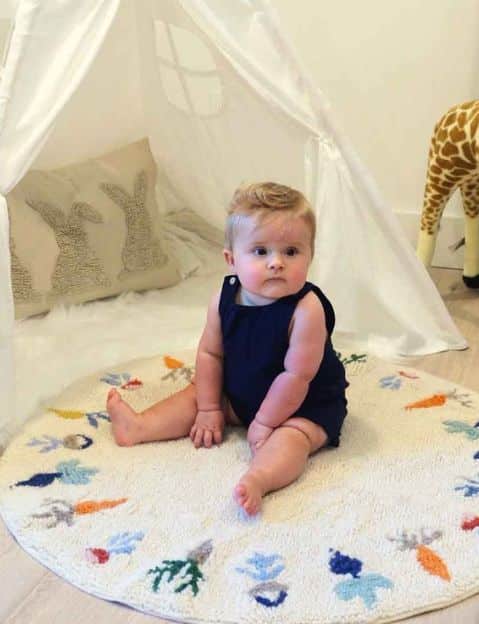
8. loomy
- Various rug sizes, shapes + patterns
- Made from banana silk, hemp, jute, recycled fiber, viscose, or wool
- Any colored yarn dyed using low-impact techniques
- Handcrafted by indigenous artisans
So what do you think of these non toxic, sustainable rugs? Let me know in the comments!
The post 8 Best Non Toxic Rugs For a Sustainable Home appeared first on Going Zero Waste.
-
Climate Change4 months ago
Guest post: Why China is still building new coal – and when it might stop
-
Greenhouse Gases4 months ago
Guest post: Why China is still building new coal – and when it might stop
-
Climate Change2 years ago
Spanish-language misinformation on renewable energy spreads online, report shows
-

 Greenhouse Gases2 years ago
Greenhouse Gases2 years ago嘉宾来稿:满足中国增长的用电需求 光伏加储能“比新建煤电更实惠”
-
Climate Change Videos2 years ago
The toxic gas flares fuelling Nigeria’s climate change – BBC News
-

 Climate Change2 years ago
Climate Change2 years ago嘉宾来稿:满足中国增长的用电需求 光伏加储能“比新建煤电更实惠”
-

 Carbon Footprint2 years ago
Carbon Footprint2 years agoUS SEC’s Climate Disclosure Rules Spur Renewed Interest in Carbon Credits
-
Renewable Energy5 months ago
US Grid Strain, Possible Allete Sale



